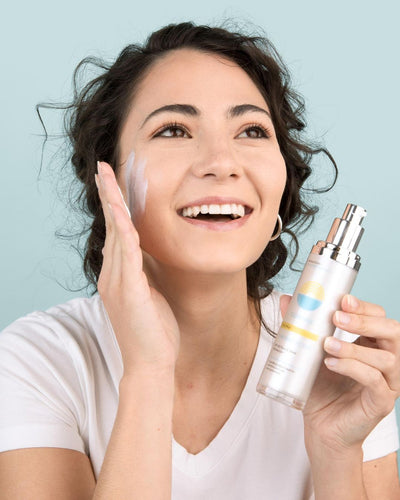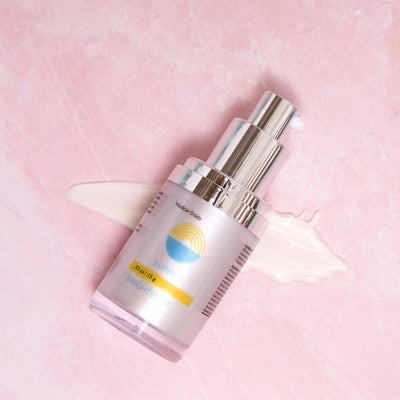Are you serious about taking care of your face? Spa treatments might make your skin feel fresh and pampered, but do you wonder if the benefits are getting past the surface? Medical grade facials are one way that you can take action towards improving your regular skincare regimen. Learn more about the advantages and reliability of medical grade facials below.
Overview
If you are interested in getting facials, you are probably serious about taking care of your skin. Scheduling regular facials can be one of the best ways to fight off signs of aging such as wrinkles, fine lines, and sagging before they appear. However, not all treatments or facilities are equal. Medical grade facials are administered by qualified professionals. With this expertise, you will receive more powerful and effective rejuvenation than you would with a classic facial.
The protective functions of medical facial treatments last longer because they can penetrate the surface layers of your skin. With select chemicals being the primary components of these medical grade peels, the mask can attach to dead skin cells and irregularities to exfoliate and bring healthy skin to the surface.
The age-fighting and gravity-defying properties of these treatments can last longer than a flowery lotion or mask. Instead of soothing from the top layer like a spa, these peels go straight to the source below the surface of your skin.
What Is a Medical Grade Facial?
A medical grade facial is a skin treatment that offers longer-lasting results because it can penetrate below the epidermis, or top layer of skin, to encourage healthy skin that can regenerate naturally. Many targeted procedures can treat skin problems or concerns. With a medical grade facial, you will have access to more powerful concentrations and tools to get the best results.
What Are the Key Benefits to Medical Grade Facials?
Some of the revitalizing features of this type of facial are more prolonged tightness, and brightness as well as smoothing and lifting the skin. These treatments work well with other non-invasive treatments like fillers and laser treatments which provide for the most comprehensive and effective treatment.
What Can It Do for Your Skin?
The distinguishing factor of medical grade facials is their long-lasting results. When administered regularly, these treatments can provide you with more benefits than either spa facials or a single medical grade facial. Since a medical grade facial retrains your skin, it is best to repeat to ensure the enhancement reaches its full potential.
How Does It Differ From a Spa Facial?
Spa facials do provide some benefits to your skin. However, these effects can only last a few days at best. After that period, your skin will return to the state it was in before you even went to the spa. Conversely, a medical grade facial contains ingredients to help your skin improve even after the initial effects of the treatment are over.
Additionally, medical grade facials might not be as relaxing as spa facials. Since these benefits are focused on lasting improvement, you might find that the initial experience causes more discomfort so that you can have a greater reward in the days to come. There may be mild irritation to occur with some medical grade treatments. However, this potent effect is only a sign that this product can improve your skin so powerfully as well.
Who Administers the Facial and What Is Their Typical Background?
You should expect to receive a medical grade facial from a licensed dermatologist or a certified esthetician who is supervised by a cosmetic doctor. Since these procedures offer higher quantities of chemicals, they must be handled with more expertise than a regular spa can offer.
Popular Types of Medical Grade Facials?
One popular medical peel is the glycolic peel. Both classic spas and medical spas offer this service. However, you will find the strength to be greatly limited at a spa. Medical grade glycolic peels contain up to 70% concentration of glycolic acid. When compared to the limit of 30% at spas, it is easy to see why medical grade facials offer more powerful results.
Many medical grade facials offer combinations of exfoliating and cleansing ingredients. These elements provide anti-inflammatory, antibacterial, and anti-acne benefits, particularly when used in an appropriate combination. Some popular ingredients are TCA (best for brightening), salicylic acid (best for purifying), retinoic acid (promotes collagen and elastin), lactic acid (best for mild exfoliation), and hyaluronic acid (best for moisturization).
Another treatment used in conjunction with medical peels is a dermaplaning procedure. With the help of a small blade, the practitioner can remove dead skin, fine hairs, and even light acne scars to reveal healthy, glowing skin. This combination of light exfoliation and shaving allows serums to penetrate more easily into the skin.
When Is a Good Time to Get a Facial?
If you observe that your skin appears to be dehydrated, prone to acne, or damaged from the sun, a medical grade facial might be ideal for you. It can also be used to combat aging effects on the skin. While it is better to treat these problems preemptively, facials may help in reversing damage from various conditions as well.
It is not a good time to get a facial if pregnant. Due to the chemicals present in these facials posing a risk to your body, it is best to stay away from those procedures.
Where Can You Find Medical Grade Facials?
You might find these types of facials at dermatology centers that have a medical professional on staff. There are also special spa events where doctors attend to offer these services to a regular clientele.
What Do Different Skin Types Need to Consider Before a Facial?
If you have a certain problem with your skin, such as discoloration or inflammation, you might find special benefits from a chemical peel. One of the many benefits of a medical facial is that technicians will be entirely capable of tailoring a facial to your exact needs and sensitivities. Here are a few issues that medical facials can address:
Best for Sensitive Skin: Lactic Acid
Even if you suffer from sensitive skin, you can still reap the benefits of an exfoliating mask. Consider opting for a mild medical peel such as a lactic acid mask. Though gentle on your skin, this peel still cleanses, smoothes, and invigorates your skin for a natural boost.
Additionally, if you experience rosacea or other inflammatory skin conditions, a mild lactic peel can reduce redness and swelling as it helps calm and revive the skin.
Best for Dryness: Hyaluronic Acid
If you have dry skin in need of new vitality, consider a hyaluronic mask. This component carries a large amount of water and provides a great option for skin that needs extra hydration. When paired with other masks or ingredients, this element can keep your skin glowing while still encouraging regeneration from deep within.
Best for Oily Skin: Salicylic Acid
For those with oily skin, a medical grade facial can provide immediate cleansing and smoothing effects. If you are concerned about having ongoing oily skin, a salicylic acid peel can help fight off your skin’s oil levels, revealing smooth skin with fewer impurities. This ingredient helps to exfoliate the skin as well as fight off acne problems.
Best for Discoloration: TCA
TCA peels offer brightening effects along with the mask’s exfoliating and cleansing capabilities. If you are interested in correcting sun damage or hyperpigmentation, this facial might be right for you. As healthy layers of skin are revealed from beneath the surface, this peel encourages regeneration for fresh and even skin.
How Often Should You Get a Facial?
Some experts recommend receiving this treatment as often as once a month. Even scheduling a quarterly visit for a medical grade facial will offer greater benefits than just a single visit. You will be able to notice cumulative benefits with every repeated treatment of chemical peels.
When you do need to give your skin a break between treatments, you can request other physical exfoliation procedures such as dermaplaning, microneedling, or microdermabrasion.
How Much Does a Medical Grade Facial Cost?
The cost for these procedures ranges from $175 to $500.
Conclusion
Whether you have active skin concerns or you are interested in protecting it from future issues, a medical grade facial will enhance skin texture and skin health. With the ability to use strong and beneficial chemical ingredients that traditional spas don’t have access to, a licensed technician can tailor a treatment that will give you the maximum power and improvements.
For those who are more interested in investing in lasting and cellular changes for their skin over temporary comforts, a medical grade facial is the right choice. These chemicals leave your face glowing and regenerating exactly as it is made to do.




